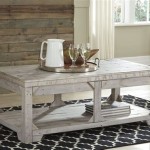DIY Lift Top Coffee Table Mechanism: Essential Aspects
A lift-top coffee table is a versatile and functional piece of furniture that can enhance the style and functionality of any living space. Creating your own DIY lift top coffee table can be a rewarding and satisfying project. Understanding the essential aspects of the mechanism is crucial for a successful outcome.
Components of a Lift Top Mechanism
The core components of a lift top mechanism include:
- Hydraulic Pistons: Gas-filled cylinders that provide the lifting force.
- Brackets: Metal supports that connect the pistons to the tabletop and base.
- Hinges: Allow the tabletop to pivot smoothly as it lifts.
- Latch System: Keeps the tabletop in a closed position when not in use.
Selecting Hydraulic Pistons
The correct size and power of the pistons is essential for proper operation. Consider the weight of the tabletop and the desired height of the lift. Ensure the pistons are not overextended, as this can reduce their lifespan.
Bracket Installation
The brackets provide stability and support to the mechanism. They must be securely attached to the tabletop and base using appropriate screws or bolts. Use a level to ensure the brackets are aligned properly.
Hinge Attachment
The hinges allow the tabletop to move smoothly as it lifts. Position the hinges accurately on the tabletop and base, and secure them with screws or bolts. Ensure the hinges are properly aligned and that the tabletop opens and closes without any obstructions.
Latch System
The latch system prevents the tabletop from opening unintentionally. Consider a simple magnetic latch or a more secure latch with a handle. Install the latch on the inside of the tabletop, ensuring it engages securely with the base when the table is closed.
Final Assembly
Once all components are installed, connect the hydraulic pistons to the brackets. Ensure the pistons are fully extended and that the tabletop lifts and closes smoothly. Adjust the latch system to ensure it functions properly.
Tips for Success
- Use high-quality hardware for durability and longevity.
- Test the mechanism thoroughly before final assembly.
- Lubricate the hinges and pistons periodically to ensure smooth operation.
- Do not overload the tabletop, as this can damage the mechanism.
- Seek professional assistance if you encounter any technical difficulties.
By understanding and implementing these essential aspects, you can create a functional and stylish DIY lift top coffee table that adds both convenience and aesthetic appeal to your living space.

Diy Lift Top Coffee Table Step By Instructions Chisel Fork

Diy Lift Top Coffee Table Step By Instructions Chisel Fork

Diy Lift Top Coffee Table Step By Instructions Chisel Fork

Diy Lift Top Coffee Table Step By Instructions Chisel Fork

How To Build A Lift Top Coffee Table With Storage And Copper Pipe Base Crafted Work

Diy Lift Top Coffee Table Step By Instructions Chisel Fork

How To Build A Lift Top Coffee Table With Storage And Copper Pipe Base Crafted Work

Lift Top Google Search Coffee Table Plans Woodworking

How To Make A Coffee Table With Lift Top Plans Design Diy

How To Build A Lift Top Coffee Table With Storage And Copper Pipe Base Crafted Work
Related Posts








